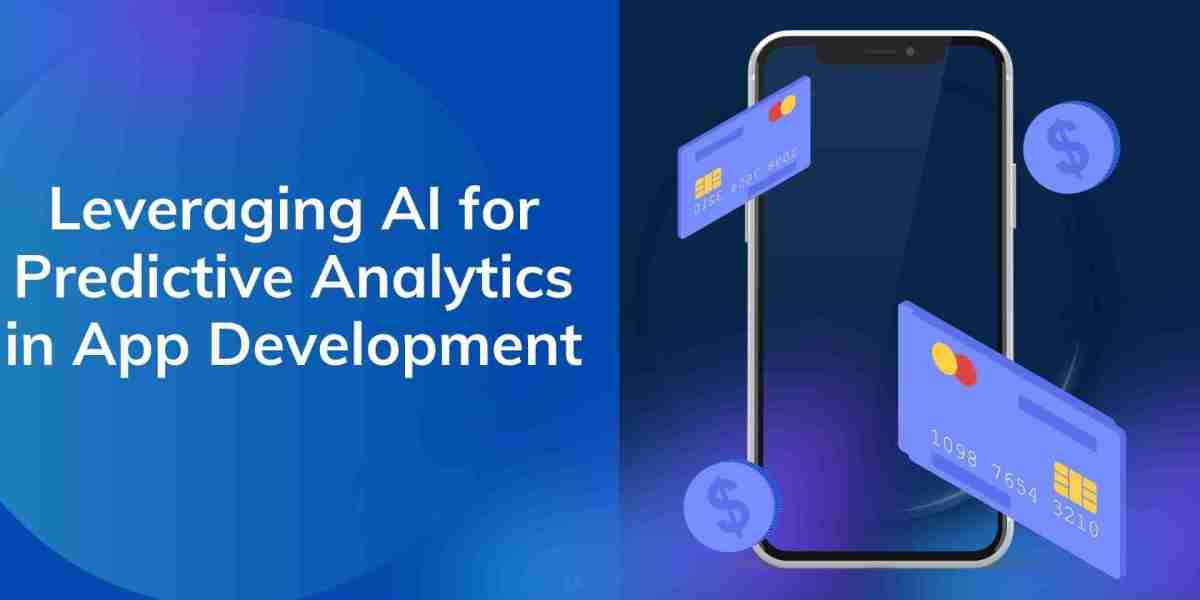In today's digital economy, mobile applications are evolving rapidly, and user expectations are higher than ever. As businesses compete to deliver smarter, faster, and more personalized experiences, artificial intelligence (AI) has emerged as a transformative force in app development. Among the many applications of AI, predictive analytics stands out as a key technology enabling developers to anticipate user behavior, optimize functionality, and drive data-informed decisions.
This article explores how leveraging AI for predictive analytics in app development can revolutionize the way applications are designed, deployed, and scaled.
Understanding Predictive Analytics in App Development
Predictive analytics involves using statistical algorithms, machine learning techniques, and data mining to analyze historical data and make informed predictions about future events. When integrated into mobile and web applications, predictive analytics allows developers to:
- Forecast user actions and preferences
- Identify potential churn or drop-off points
- Optimize in-app marketing and monetization strategies
- Enhance performance and reliability
- Deliver highly personalized user experiences
The power of predictive analytics lies in its ability to transform raw data into actionable insights — a capability that is exponentially enhanced when coupled with AI.
The Role of AI in Predictive Analytics
AI technologies — including machine learning (ML), deep learning, and natural language processing (NLP) — supercharge predictive analytics by:
- Learning patterns from massive datasets without human intervention
- Continuously improving predictions through feedback and new data
- Understanding unstructured data, such as text, images, and voice inputs
- Automating decision-making processes based on forecasted outcomes
AI models can detect subtle patterns in user behavior that might elude traditional analytical methods. This makes them particularly valuable in app development, where user interactions are complex and varied.
Key Applications in App Development
User Behavior Prediction
AI-powered predictive analytics enables apps to anticipate what a user is likely to do next. For example:
- E-commerce apps can predict products a user may want to buy based on browsing and purchase history.
- Streaming apps can suggest movies or music based on past preferences and time of day.
- Fitness apps can recommend personalized workout plans based on progress and goals.
These insights not only enhance user satisfaction but also drive engagement and retention.
Personalized User Experience
By analyzing real-time and historical data, apps can deliver content, notifications, and recommendations tailored to individual users. AI makes this personalization dynamic — adjusting in response to changing behavior patterns.
For instance, a news app can re-prioritize articles based on reading habits, while a finance app might highlight budgeting tips for users who tend to overspend.
Churn Prediction and User Retention
AI models can identify signals that a user is likely to abandon an app — such as decreased activity, skipped onboarding steps, or slow load times. With this information, developers can take proactive steps:
- Offering targeted promotions
- Sending personalized re-engagement messages
- Improving the user interface
These actions help reduce churn and increase customer lifetime value.
Smart App Monetization
Predictive analytics helps app developers determine:
- Which users are most likely to convert into paying customers
- The best time to display ads or in-app purchase options
- Pricing strategies that maximize revenue without deterring users
AI can also predict the success of new monetization models by simulating how changes might affect user behavior.
Error and Crash Prediction
AI systems can analyze log files and performance metrics to detect patterns leading to app crashes or performance degradation. Predictive models alert developers before issues become widespread, reducing downtime and improving user trust.
Optimizing Feature Development
Instead of relying solely on user feedback, predictive analytics can inform what features users are likely to adopt or ignore. This reduces the risk of spending resources on low-impact updates and ensures continuous improvement aligned with user expectations.
Tools and Technologies
There are numerous AI and predictive analytics tools that facilitate integration into app development workflows:
- Google Firebase + ML Kit – Offers ML tools for mobile apps, including predictive user segmentation.
- Microsoft Azure Machine Learning – Cloud-based solution for building, training, and deploying predictive models.
- Amazon SageMaker – Allows developers to build, train, and deploy ML models at scale.
- TensorFlow and PyTorch – Popular open-source frameworks for custom ML model development.
- BigQuery ML – Enables SQL-based predictive analytics on Google Cloud Platform.
These tools provide scalable and cost-effective platforms for embedding intelligent behavior into applications.
Challenges and Considerations
While the benefits are significant, integrating AI-driven predictive analytics into app development also presents challenges:
- Data Quality and Privacy: Inaccurate or biased data can skew predictions, while data privacy regulations (e.g., GDPR, CCPA) require careful compliance.
- Model Interpretability: Black-box AI models can make it difficult to understand why certain predictions are made, which is critical for trust and debugging.
- Resource Constraints: Training and maintaining ML models requires computational power and expertise, which may be a barrier for smaller teams.
- Ethical Use of Data: Predictive insights should be used responsibly to avoid manipulation or discrimination.
Despite these challenges, the advantages of predictive analytics far outweigh the hurdles when approached with care.
Future Outlook
As AI technology continues to mature, predictive analytics will become even more accessible and powerful:
- Edge AI will allow real-time predictions directly on user devices, enhancing speed and privacy.
- Explainable AI (XAI) will improve transparency in predictions, enabling better user trust and regulatory compliance.
- AutoML platforms will lower the barrier to entry for non-experts, democratizing predictive model creation.
These innovations will further empower developers to create smarter, more intuitive apps that adapt seamlessly to user needs.
Conclusion
AI-driven predictive analytics is no longer a futuristic concept — it's a game-changing capability that is reshaping the app development landscape today. By harnessing historical and real-time data, developers can anticipate user behavior, reduce churn, and optimize performance with precision.
As competition in the app market intensifies, those who effectively integrate predictive analytics into their development strategy will gain a substantial edge. Whether you're building the next big startup or refining an enterprise-grade application, embracing AI for predictive analytics is a strategic move toward innovation and success.




